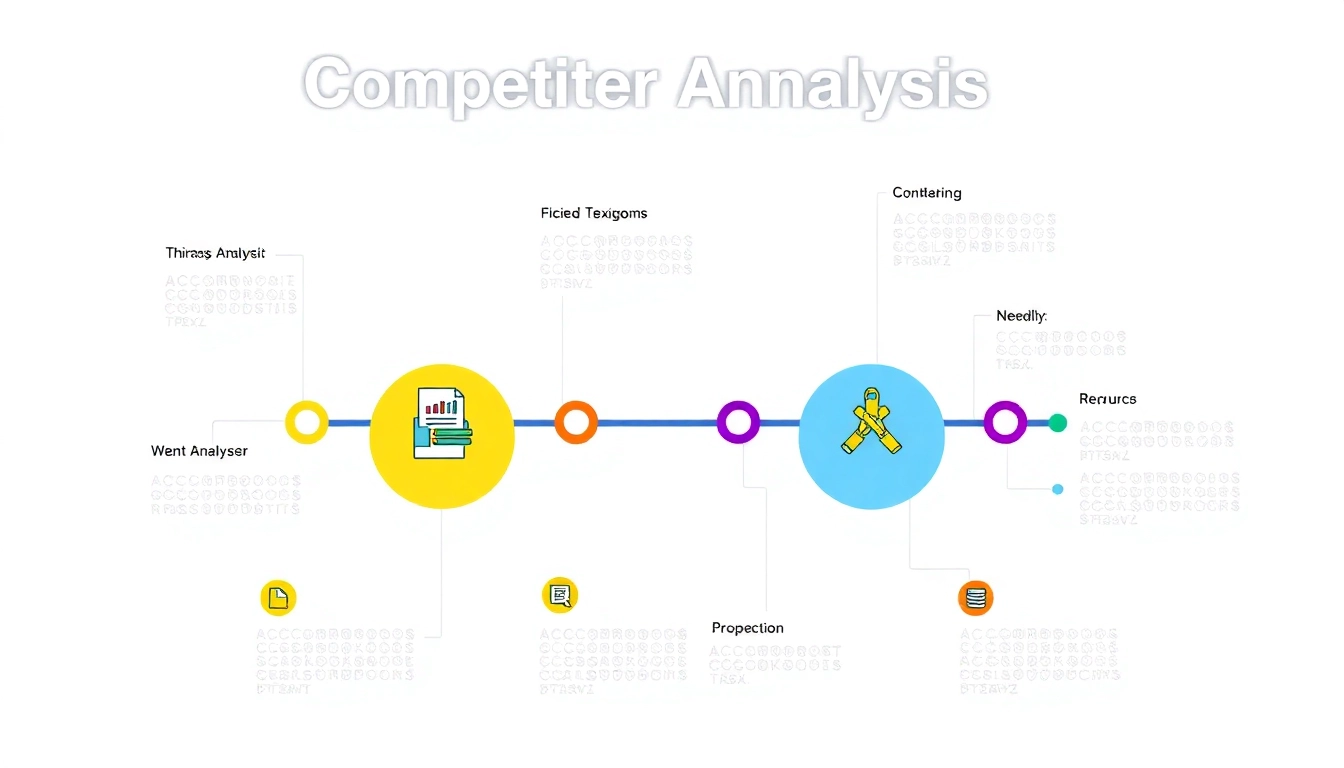
Understanding Competitor Analysis
What is Competitor Analysis?
Competitor analysis, also known as competitive analysis or competition analysis, is an essential process for businesses aiming to achieve marketing success and maintain a competitive edge. It involves a systematic examination of similar brands within the same industry to gain insightful knowledge about their offerings, branding strategies, sales techniques, and marketing methods. This analysis is not only about observing competitors; it entails understanding their strengths and weaknesses in relationship to your own business. It is a vital component of strategic planning that helps businesses identify areas for improvement and potential market opportunities.
The Importance of Competitor Analysis for Businesses
Understanding your competitors can significantly influence your overall strategy and decision-making. Competitor analysis is important for several reasons:
- Market Awareness: By analyzing competitors, businesses can develop a better understanding of the marketplace, including trends and potential opportunities.
- Benchmarking Performance: Evaluating competitors’ performance can help set benchmarks for your own company’s performance and provide a foundation for setting strategic goals.
- Identifying Gaps: Discovering gaps in the market that competitors are not addressing can lead to identifying new opportunities for product development or service enhancement.
- Informed Strategy Development: Knowledge of competitors’ strategies allows businesses to craft their own strategies to differentiate themselves and appeal to target customers better.
- Risk Mitigation: Understanding competitors’ weaknesses can help you anticipate market moves and prepare accordingly, minimizing risks associated with competitive actions.
Types of Competitor Analysis
Competitor analysis can be categorized into various types, each serving different strategic purposes:
- Direct Competitor Analysis: Focuses on businesses that offer similar products or services and target the same customer base.
- Indirect Competitor Analysis: Looks at businesses providing substitute products or services that can fulfill similar customer needs.
- Market Position Analysis: Evaluates how competitors position themselves in the market in terms of pricing, targeting, and branding.
- SWOT Analysis: Examines the strengths, weaknesses, opportunities, and threats of your competitors to better understand their business environment.
Steps to Conduct an Effective Competitor Analysis
Identifying Your Competitors
The first step in conducting a competitor analysis is identifying who your actual competitors are. This might seem straightforward, but it requires thorough research. Start with both your direct competitors, offering the same products or services, and indirect competitors, that may not offer the same products but meet similar consumer needs. Tools like competitor analysis software, Google Trends, and industry reports can help pinpoint these entities effectively.
Gathering Relevant Data
Once you’ve identified your competitors, the next step is to gather data about them. This could involve:
- Website Analysis: Review competitors’ websites to understand their offerings, customer engagement strategies, and overall user experience.
- Content Audit: Investigate the type of content they produce, identifying key themes in their blog posts, videos, and social media presence.
- Customer Feedback: Look at reviews and testimonials to gauge customer satisfaction and identify common issues customers face with competitors’ products.
- Financial Performance: If publicly available, study their financial reports to understand their market position and profitability.
Analyzing Competitor Strengths and Weaknesses
After gathering data, the next key step is analyzing what you found. Identify the strengths that allow competitors to thrive, such as innovative products, a strong brand presence, or exceptional customer service. Conversely, also highlight their weaknesses, which can range from poor online engagement to lackluster product quality. This SWOT analysis helps differentiate your business while guiding potential areas for improvement.
Tools and Resources for Competitor Analysis
Top Competitor Analysis Tools
A multitude of tools is available to facilitate effective competitor analysis. Some recommended tools include:
- SEMrush: A comprehensive tool that provides insights into competitors’ traffic, keywords, and ad strategies.
- Similarweb: Allows users to view competitors’ website traffic, engagement metrics, and audience demographics.
- Ahrefs: A powerful SEO tool that helps analyze backlinks, keywords, and overall site performance.
- BuzzSumo: A content marketing tool that can identify what content performs best in your industry.
Utilizing Social Media Insights
Social media platforms can provide a treasure trove of data for competitor analysis. By following competitors on social media, you can monitor their engagement levels, content strategies, and customer interactions. Tools like Hootsuite or Sprout Social offer analytics to track social media performance for your competitors, enabling you to understand what resonates with your target audience.
Benchmarking Against Industry Standards
It’s vital to compare not just against competitors, but against industry standards as well. This benchmarking helps assess your company’s performance in a broader context. Organizations should identify key metrics relevant to their industry, such as customer acquisition cost, conversion rates, and customer retention rates, to maintain a competitive advantage.
Implementing Findings from Your Analysis
Strategic Planning Based on Insights
After gathering and analyzing competitor data, the next step is translating these insights into actionable strategies. Use your findings to inform decisions about product development, marketing campaigns, and customer service enhancements. Develop strategic plans that refine your business processes and leverage market gaps discovered through analysis.
Measuring the Impact of Changes
Once changes have been implemented, it’s crucial to measure the impact of those changes. Analytics tools can help track key performance indicators (KPIs) associated with your business objectives. Regular reports on sales performance, website traffic, and customer feedback can provide insights into whether the adjustments lead to desired outcomes.
Continuous Monitoring of Competitors
The business landscape is ever-evolving, which means that competitor analysis is not a one-time task. Regular monitoring of competitors’ activities, strategies, and market trends is essential for long-term success. Implementing a framework for continuous analysis ensures that your business remains agile and responds appropriately to market shifts.
Case Studies: Success Stories from Competitor Analysis
How Businesses Transformed Insights into Action
Numerous businesses have successfully utilized competitor analysis to revamp their strategies, with remarkable results. For instance, a small e-commerce company noticed through competitor analysis that rival sites offered free shipping on orders over a certain amount. In response, they introduced a similar threshold, resulting in a significant increase in average order value and customer satisfaction.
Real-World Applications of Competitive Analysis
Another example is a tech startup that observed competitors applying aggressive pricing strategies. Upon analyzing market positioning and customer feedback, they decided to emphasize product quality and customer service instead. This differentiation allowed them to capture a loyal customer base willing to pay a premium for superior services.
Lessons Learned from Competitive Analysis
Investing time in competitor analysis brings key lessons to light. Businesses often realize that staying informed about competitors not only helps anticipate market moves but also encourages innovation within their own operations. Keeping abreast of competitors’ successes and failures can shed light on best practices and cautionary tales, guiding strategic decisions moving forward.






